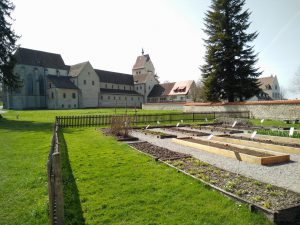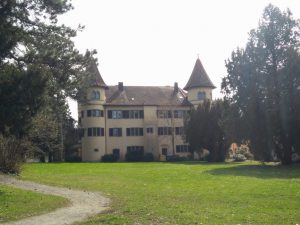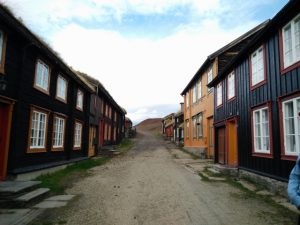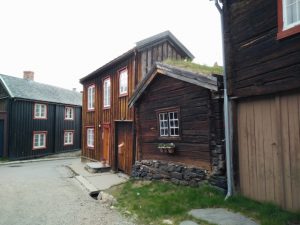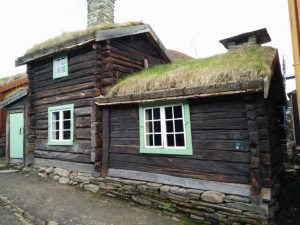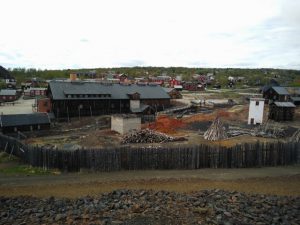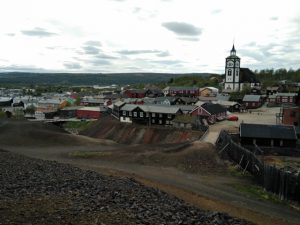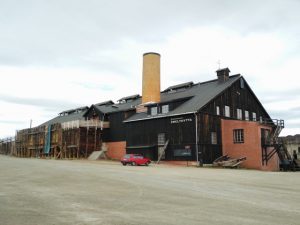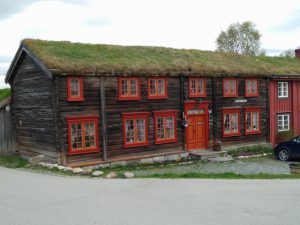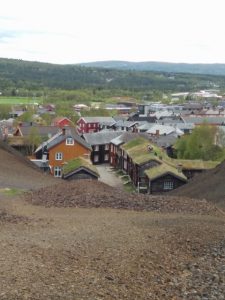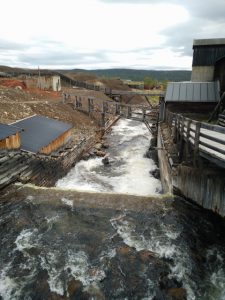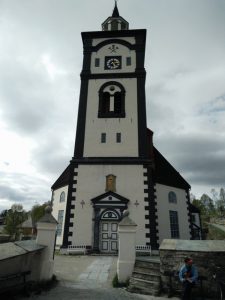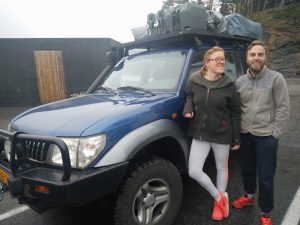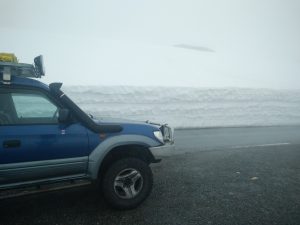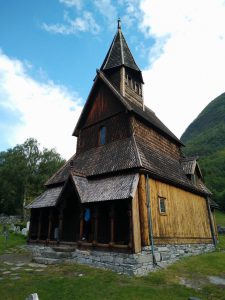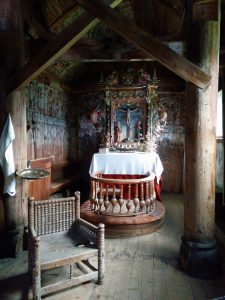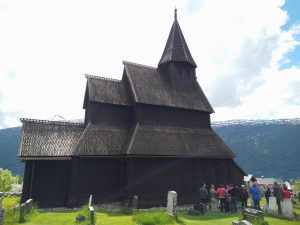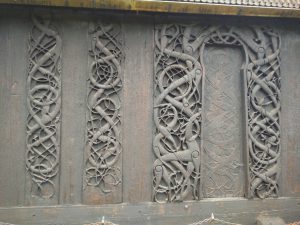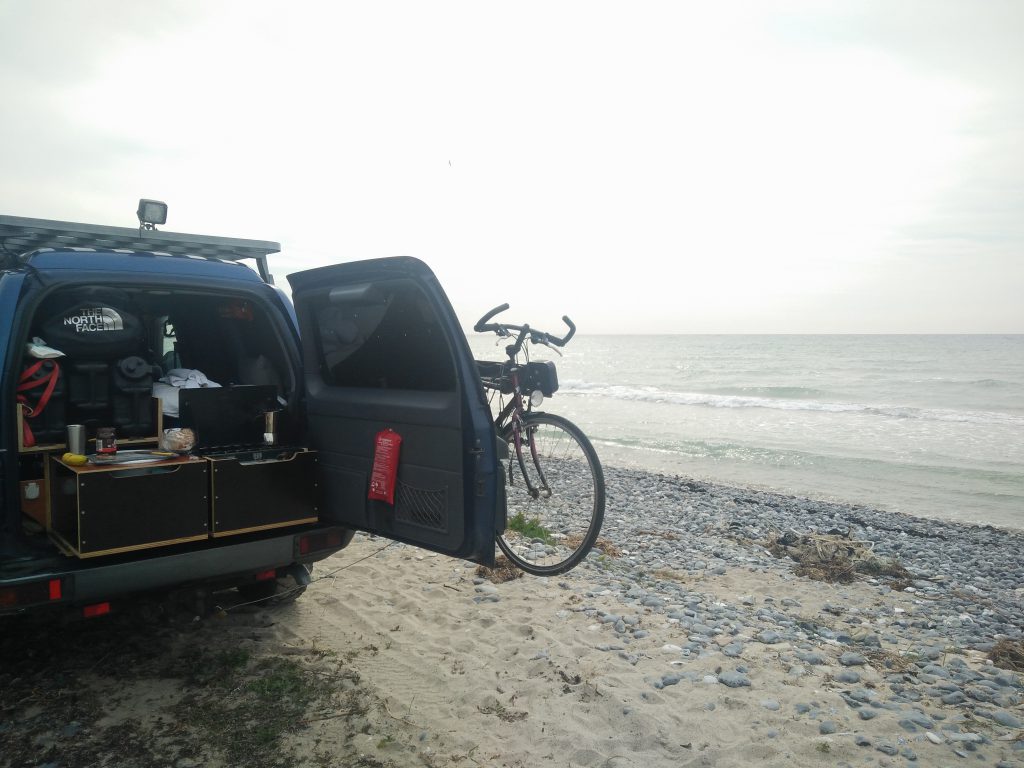After a little week of hiking in Liechtenstein and Switzerland I went driving the Deutsche Alpenstraße, from te Bodensee to the Königssee, but first a technical issue with the car needed to be solved. Continue reading “Driving the Deutsche Alpenstraße”
Along the Bodensee
When my friend Marcel left again I continued exploring the surroundings of the Bodensee. First I found myself a nice spot in the forest where I would spend the night, en then took the bicycle to go to Reichenau island.
Crossing Germany, Rhine Valley to Bodensee
After wild camping next to the Rhine I continued my journey to the Bodensee. On the way I made a stop at Messel pit, a disused shale quarry. Many fossils have been found here which earned it a UNESCO World Heritage Site listing. At the local museum you can learn about it’s history and findings. Continue reading “Crossing Germany, Rhine Valley to Bodensee”
Crossing Germany to the Rhine Valley
After leaving the Deventer City Camping all the farewell activities were completed and my journey had really started. The goal was to reach the Bodensee by the weekend to meet my long time friend Marcel there. On the way I took the time to visit some sites.
The ancient mining town of Røros
“Røros Mining Town and the Circumference is linked to the copper mines, established in the 17th century and exploited for 333 years until 1977. The site comprises the Town and its industrial-rural cultural landscapes; Femundshytta, a smelter with its associated area; and the Winter Transport Route. Completely rebuilt after its destruction by Swedish troops in 1679, Røros contains about 2000 wooden one- and two-storey houses and a smelting house. Many of these buildings have preserved their blackened wooden façades, giving the town a medieval appearance. Surrounded by a buffer zone, coincident with the area of privileges (the Circumference) granted to the mining enterprise by the Danish-Norwegian Crown (1646), the property illustrates the establishment and flourishing of a lasting culture based on copper mining in a remote region with a harsh climate.”
A cold night and an ancient religious site
Considering the tunnel digging skills of the Norwegians one might not be surprised that the longest tunnel of the world, almost 25 KM, is in Norway. And yesterday I could have driven trough, however I didn’t. Instead I drove over the Lærdal tunnel, trough cold white landscape and even camped in the snow.
On the way up the mountain I met a relative of Brutus, an equal metallic blue Land Cruiser 95 “Prado” also dressed up for adventure. The further up the mountain I came the thicker the pack of snow was getting and I was driving trough walls of snow eventually.
My camp fore the night was at Flotvatnet, a still frozen lake and waterfall. Yes, it was cold, but the scenery was definitely worth it.

Just a bit after my camping spot an art installation was constructed by the name of Vedahaugane. Inside a bear’s den a bear was having a winter sleep on a pile of rubbish from ancient to modern times. The message was clear.
In the afternoon I visited the UNESCO World Heritage site Urnes Stave Church. The wooden church of Urnes, the stavkirke, was built in the 12th and 13th centuries and is an example of traditional Scandinavian wooden architecture from that era where traces of Celtic art and Viking traditions are brought together.
At the end of the evening I arrived at one of the foothills of the Jostedalsbreen glacier. Here the glacier ended and every now and then pieces of it broke off and felt down in the valley, an impressive sight. Eventually this ice melted and went up in a stream. A peaceful and quiet setting where I decided to make camp for tonight.


Bergen
This night I was invited by Alf from CouchSurfing to spend the night on his couch and to join him to the Nattjazz festival, but I first explored the city of Bergen by myself on the bicycle.
I parked the car close to Alf’s home and from there cycled to the city centre which was about 10 KM downhill. At the tourist information I picked up a cycling route which al in al took a couple of hours and gave a good sight of the city.
Lots of castles and an amazing wildcamp along the beach
Yesterday morning I left Copenhagen in the morning, I decided to keep the rest of the city for an dedicated city trip. I drove north to Helsingør where the UNESCO World Heritage site Kronborg Castle is situated.
Continue reading “Lots of castles and an amazing wildcamp along the beach”
On the bicycle to the cliffs of Møn
Crossing Spain
Tonight is my last night in Europe, during the last 10 days I crossed Spain, successively the Pyrenees, Pamplona, Madrid, Granada and the Sierra Nevada.
In the Pyrenees I drove through the mountains, between cows, rivers and farms. Because there had to be refueled, I decided to go to Pamplona on time. Unsuccessfully I tried to book an AirBNB, thus finally wildcamping again, however this time in a quiet street in the city. The next day I discovered Pamplona, a nice little town with beautiful city walls, forts and other antiquity.
